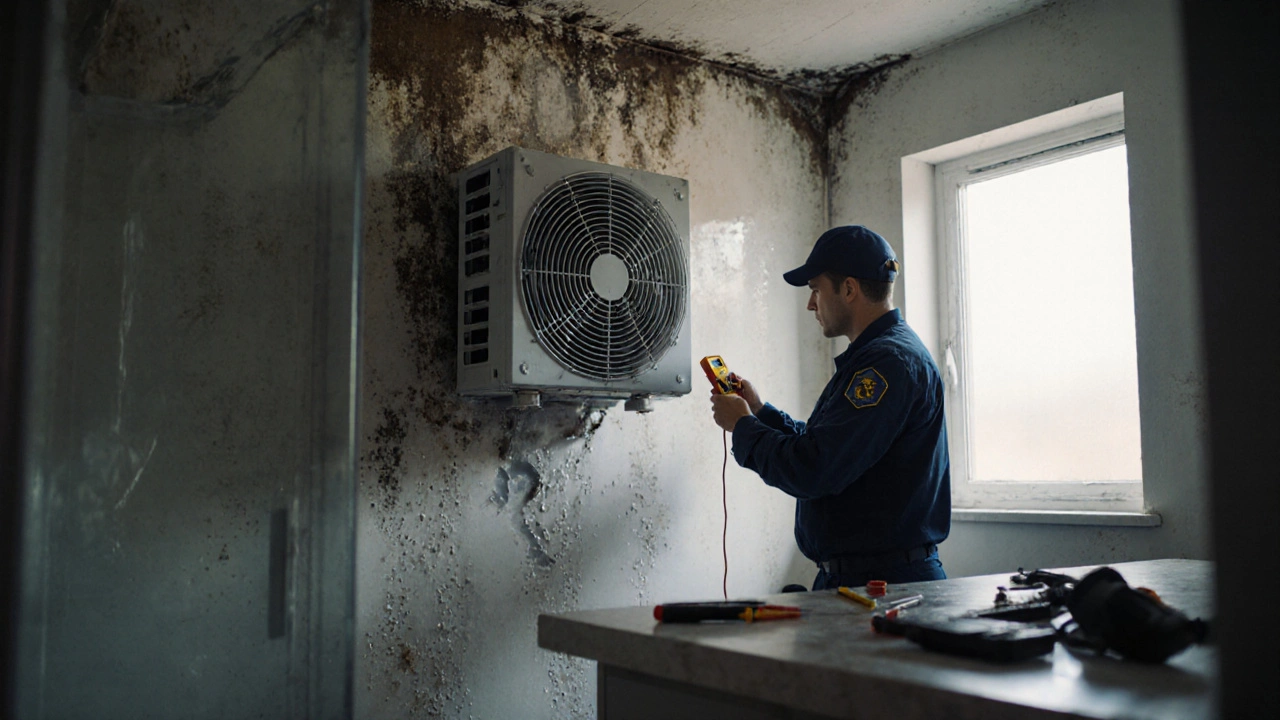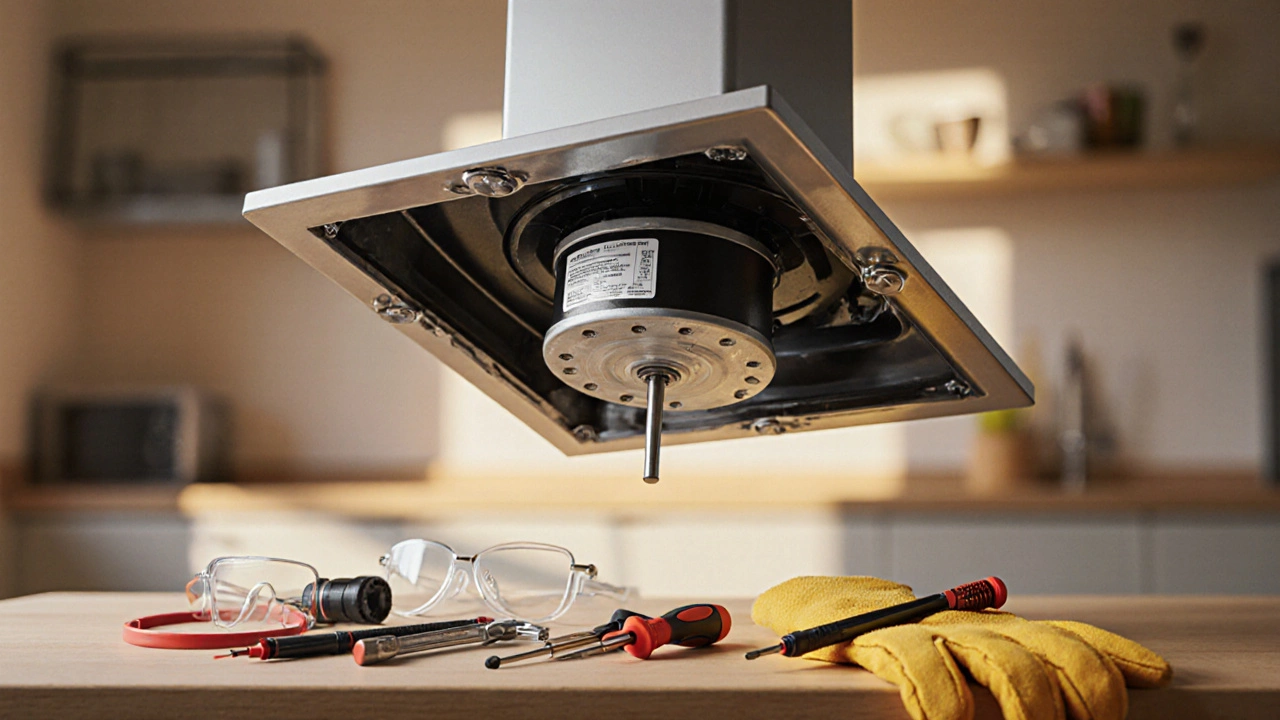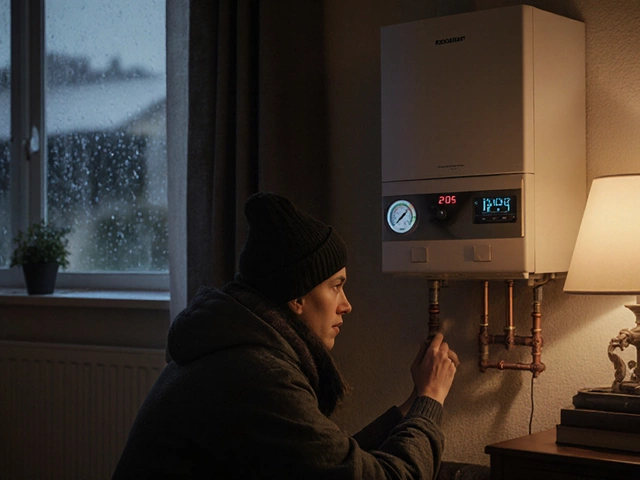Extractor Fan Size Calculator
How big should your extractor fan be?
Choose your room type and dimensions to find the ideal airflow rate for your home.
Recommended Fan Size
Why this size?
Watch out for these issues
If your extractor fan has stopped working, doesn’t pull air anymore, or is making a noise like a dying vacuum, you’re not alone. In homes across Auckland, extractor fans are one of the most overlooked but essential parts of the ventilation system. They keep moisture out of bathrooms, remove cooking smells from kitchens, and prevent mold from taking over your walls. But when they break, many people wonder: who would replace an extractor fan? The answer isn’t always obvious, and hiring the wrong person can cost you more in the long run.
Is It a Simple Fix or a Full Replacement?
Before you call anyone, check if the fan just needs cleaning or a new motor. Many extractor fans stop working because dust and grease have clogged the blades or the motor bearings have seized. A quick clean with a damp cloth and some white vinegar can bring it back to life. If it’s still silent after that, or if the motor hums but doesn’t spin, then it’s time for a replacement.
Replacing an extractor fan isn’t like swapping a lightbulb. It involves electrical wiring, ductwork, and sometimes cutting into ceiling or wall cavities. If you’re not comfortable working with electricity or cutting into your home’s structure, don’t risk it. DIY mistakes here can lead to water leaks, electrical hazards, or poor ventilation that makes your home unhealthy.
Electrician or Handyman? That’s the First Question
Most people assume they need an electrician-and they’re right, mostly. But not all electricians do extractor fan replacements regularly. Some only work on switchboards, wiring new circuits, or installing security systems. You need someone who knows how to handle ventilation systems too.
A licensed electrician can safely disconnect power, wire the new fan to your existing circuit, and make sure the earth and neutral connections are correct. That’s non-negotiable. But if your old fan was connected to a duct that runs through the roof or wall, you also need someone who understands airflow. A good electrician will check the duct for blockages, kinks, or leaks. If the duct is damaged, the new fan won’t work properly, no matter how powerful it is.
Some handymen can do this job too-if they’re qualified. In New Zealand, if the job involves fixed wiring (like connecting to a wall switch or circuit), only a licensed electrician can legally do it. But if the fan is plug-in (rare in bathrooms) or the wiring is already in place and just needs swapping, a competent handyman with electrical experience might handle it. Always ask to see their credentials before they start.
What About HVAC Technicians?
Heating, ventilation, and air conditioning (HVAC) technicians are the specialists for whole-house ventilation. They’re trained to calculate airflow needs, size ducts correctly, and install fans that match your home’s ventilation requirements. If you’re replacing an extractor fan in a new build, a renovated kitchen, or a bathroom that’s had a major upgrade, an HVAC pro is your best bet.
They’ll look at the room size, how often it’s used, and whether you need a timer, humidity sensor, or silent operation. For example, a bathroom in a 1980s house might only need a 15-litre-per-second fan. But if you’ve added a steam shower or removed a window, you might need a 30-litre-per-second model. HVAC technicians know these standards. Most electricians and handymen don’t.
Plumbers? Maybe, But Not Usually
Plumbers deal with pipes, drains, and water pressure. They’re experts at fixing leaks and installing showers. But unless they’ve done extra training in electrical systems and ventilation, they’re not the right person for replacing an extractor fan. Some plumbers do offer it as a side service, especially if they’re doing a full bathroom renovation. But if you’re only replacing the fan, don’t hire a plumber unless they specifically say they handle electrical ventilation work.

What to Look for in a Technician
When you’re searching for someone to replace your extractor fan, here’s what matters:
- License: For any wiring, they must be a licensed electrician. Check their licence on the Electrical Workers Registration Board website.
- Experience: Ask if they’ve replaced extractor fans before. Look for photos of past jobs or ask for references.
- Tools: They should bring a voltage tester, duct sealant, screwdrivers, and possibly a duct cutter. If they show up with just a screwdriver and no testing gear, walk away.
- Warranty: A good technician will offer at least a 12-month warranty on labor. The fan itself usually comes with a 2-5 year manufacturer warranty.
- Insurance: They must have public liability insurance. If something goes wrong and damages your wall or causes a fire, you don’t want to be stuck with the bill.
Common Mistakes People Make
Here’s what goes wrong when people hire the wrong person-or try to DIY:
- Using the wrong fan size: A fan that’s too weak won’t remove moisture. One that’s too strong can pull air from other rooms, creating negative pressure and drawing in fumes from the garage or boiler room.
- Ignoring the duct: If the duct is crushed, too long, or has too many bends, the fan will struggle. Replacing the fan without fixing the duct is like putting a new engine in a car with clogged exhaust pipes.
- Not turning off the power: Even if the switch is off, the circuit might still be live. A professional will lock out the breaker and test it with a meter.
- Choosing the cheapest option: A $50 fan from a hardware store might look like a deal, but if it’s noisy, inefficient, or doesn’t last two years, you’ll pay more in the long run.
What’s the Right Fan for Your Home?
Not all extractor fans are the same. Here’s what to consider:
- Kitchen fans: Need to handle grease and heat. Look for models with grease filters and higher airflow (at least 20-30 L/s).
- Bathroom fans: Should be quiet (under 30 dB) and moisture-resistant. A humidity sensor that turns the fan on automatically is a game-changer.
- Inline fans: These are installed in the ceiling cavity or attic and connected to ducts. They’re quieter and more powerful, ideal for larger homes or renovations.
- Smart fans: Some now connect to Wi-Fi and can be controlled by voice or app. Useful if you forget to turn it on after a shower.
Brands like Vent-Axia, Xpelair, and Broan are common in New Zealand homes. They’re reliable, easy to service, and widely stocked by local suppliers.
How Much Does It Cost?
Prices vary depending on location, complexity, and the fan you choose. In Auckland, here’s what you can expect:
- Basic fan replacement (same size, same location): $180-$300. Includes labor, removal of old unit, wiring, and testing.
- Upgrading to a better fan or adding a timer/sensor: $300-$500.
- Replacing ductwork or installing an inline fan: $500-$900.
Always get a written quote. Reputable technicians will break it down: parts, labor, disposal fee, and any extra charges.
What Happens After the Replacement?
A good technician won’t just install the fan and leave. They’ll test it:
- Turn it on and check for vibration or unusual noise.
- Use a tissue test: Hold a tissue near the grille. If it sticks, airflow is good.
- Check the duct outlet outside-air should be blowing out clearly, not leaking into the roof space.
- Confirm the switch or sensor works correctly.
They should also show you how to clean the filter (if it has one) and explain how to reset any timers or sensors.
When to Call a Professional
You should call a pro if:
- The fan makes grinding, buzzing, or rattling sounds.
- It’s been on for years and suddenly stopped.
- You see mold around the grille or on the ceiling.
- The wall or ceiling around the fan is wet or discolored.
- You’re not sure if the wiring is safe.
Don’t wait until the fan causes a bigger problem. Moisture damage leads to rot, mold, and even structural issues. Replacing a fan now saves you thousands in repairs later.
Final Advice
Don’t assume your electrician knows how to replace an extractor fan. Ask. Look for someone who has done it before. Check reviews. Ask for photos. Don’t go with the cheapest bid. A properly installed extractor fan lasts 10-15 years. Get it right the first time.
If you’re in Auckland and need help, ask local plumbing and electrical services for recommendations. Many have been doing this for decades. And if you’re replacing a fan in a rental property, your landlord is legally required to fix it-so don’t delay.
Can I replace my extractor fan myself?
You can physically remove and install a new fan if you’re handy-but if the job involves wiring, you must use a licensed electrician in New Zealand. Tampering with fixed wiring without a license is illegal and dangerous. Even if you turn off the switch, the circuit might still be live. Mistakes can cause shocks, fires, or void your home insurance.
How long does an extractor fan replacement take?
A straightforward replacement, where the new fan fits the same hole and wiring is in good condition, takes about 1 to 2 hours. If ductwork needs fixing, the fan size changes, or the ceiling needs patching, it could take up to half a day. Most professionals will give you a time estimate before starting.
Do I need a permit to replace an extractor fan?
In most cases, no permit is needed for a direct replacement of the same type and size of fan. But if you’re upgrading to a much more powerful fan, changing the duct route, or installing a new circuit, your local council might require a building consent. Always check with your local authority if you’re unsure.
Why is my new extractor fan so noisy?
A noisy new fan usually means one of three things: the duct is kinked or too narrow, the fan isn’t mounted securely, or it’s the wrong type for the space. Cheap fans often have poor-quality motors. Make sure the technician checks the duct alignment and mounts the fan with rubber isolators to reduce vibration. A well-installed fan should be barely audible from the room.
How often should I replace my extractor fan?
Most extractor fans last between 10 and 15 years. Signs it’s time to replace it include: loud noises, slow airflow, visible rust or corrosion, or if it stops working even after cleaning. If your fan is older than 10 years and you’re noticing moisture buildup, don’t wait-replace it before mold takes hold.





